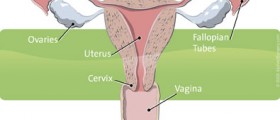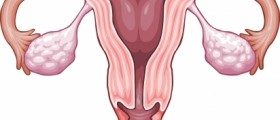
Of course, the structure of the cyst is also important: cysts differ whether they are fluid-filled, or if they appear to be a solid mass of tissue, or an ovarian cyst can have both fluid and solid components. For example small and fluid filled cysts are perfectly normal and are a part of the normal functioning of the ovary, or developing egg also looks like a small cyst, or the corpus luteum that is left behind after ovulation can also look like a cyst, while uterine or cervical polyps are overgrowths of tissue: they are not normal.
Cervical polyps are quite harmless with the risk of cancer being less than 1 %. Cervical polyps typically have no symptoms, only sometimes they cause bleeding between periods, and can be detected during a pelvic examination. They are removed only if they are large (they can be as large as several inches) or if there is an abnormal Pap smear or a persistently positive HPV (human papillomavirus) test.
Uterine polyp is also called the endometrium. It is an overgrowth of the lining of the uterine cavity. Uterine polyp might cause no symptoms or might cause irregular spotting between periods, and are diagnosed during ultrasound or by endometrial biopsy. It is highly recommendable that the endometrial polyps are removed to treat the abnormal bleeding but also because of the potential risk of cancer.
The risk of cancer because of endometrial polyps in young women between of 25 and 45 years old is relatively low: less than 5%. Unfortunately with age, the risk increases: women between the ages of 45 and 65 have a 9% chance their endometrial polyp will contain cancerous cells, and for women over the age of 65, as much as 32% of endometrial polyps will be cancerous.
















Your thoughts on this
Loading...